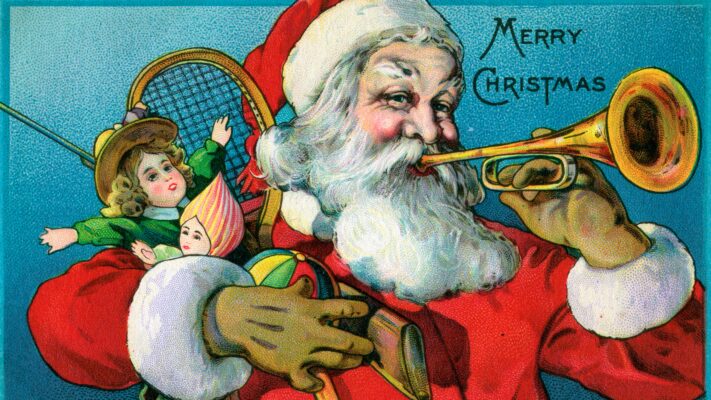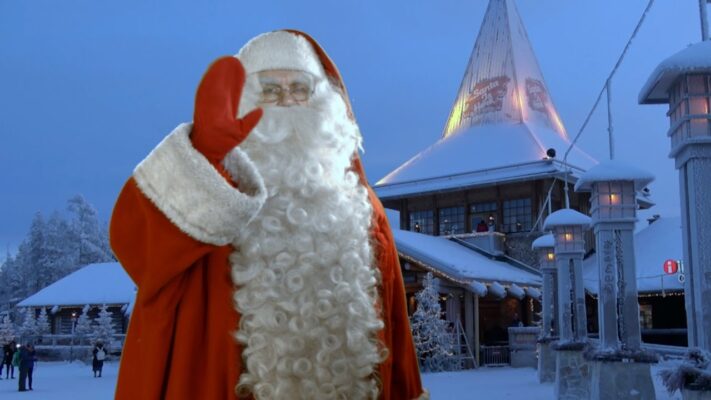Movie News
How long Has Santa Claus Been Around?
Santa Claus, the beloved figure synonymous with Christmas cheer, has captured the hearts of people worldwide for generations. But just how long has Santa Claus been around? To fully understand his history, Alibaytoon Store need to delve into centuries of legends, folklore, and cultural traditions that have shaped the jolly figure we know today.

How long Has Santa Claus Been Around? Origins of Santa Claus
The story of Santa Claus can be traced back to various ancient traditions, with roots in European folklore, religious figures, and mythological tales. The most prominent influence is Saint Nicholas, a 4th-century Greek bishop from Myra, in modern-day Turkey. Saint Nicholas was known for his generosity and charity, especially toward children and the poor. Legends speak of him performing miracles and secret gift-giving, which laid the foundation for the figure of Santa Claus.
Saint Nicholas’ reputation as a benefactor grew after his death, leading to him becoming the patron saint of children, sailors, and many other groups. Celebrations of Saint Nicholas’ feast day on December 6 became widespread in medieval Europe, with children eagerly awaiting gifts in his honor.
Saint Nicholas to Santa Claus: The Evolution through Time
The transformation of Saint Nicholas into Santa Claus is a long and complex journey, with several key cultural shifts along the way.

Medieval Europe and the Rise of Sinterklaas
In the Middle Ages, Saint Nicholas’ influence spread across Europe, where his legend began to merge with local customs and beliefs. In the Netherlands, Saint Nicholas became known as Sinterklaas, a figure closely resembling a religious bishop, wearing a red robe, white beard, and carrying a staff. Sinterklaas would visit children on the night before Saint Nicholas Day, leaving gifts in their shoes or stockings.
Sinterklaas traditions were not limited to the Netherlands; similar figures appeared in Germany, France, and other European countries. However, the figure of Sinterklaas played a pivotal role in shaping the modern-day image of Santa Claus due to its later influence on American culture.
Dutch Settlers and the Birth of Santa Claus in America
In the 17th century, Dutch settlers brought the Sinterklaas tradition to the American colonies, particularly New Amsterdam (later New York City). Over time, Sinterklaas transformed into “Santa Claus” as English-speaking settlers embraced the Dutch tradition and mixed it with their own Christmas customs.
By the early 19th century, the idea of Santa Claus began to take a more defined shape in American culture. In 1823, the famous poem “A Visit from St. Nicholas” (more commonly known as “The Night Before Christmas”) was published anonymously, later attributed to Clement Clarke Moore. This poem depicted Santa Claus as a jolly, plump, and magical figure who delivered presents to children on Christmas Eve, riding in a sleigh pulled by reindeer.
The popularity of the poem cemented Santa Claus as a beloved figure of Christmas, and its portrayal of his appearance and actions laid the groundwork for modern depictions of Santa.
Thomas Nast and the Iconic Image of Santa Claus
In the latter half of the 19th century, the image of Santa Claus further evolved through the works of political cartoonist Thomas Nast. Nast’s illustrations in Harper’s Weekly during the 1860s and 1870s portrayed Santa Claus as a chubby, jolly man with a white beard, red suit, and fur-trimmed hat, similar to the Santa we recognize today. These drawings also introduced key elements such as Santa’s workshop at the North Pole and his list of “naughty or nice” children.

Nast’s depictions of Santa Claus were widely popular and helped standardize his image across the United States. By the early 20th century, the modern Santa Claus was firmly entrenched in American holiday culture, with the red-suited, round-bellied figure becoming a symbol of Christmas.
The Global Spread and Cultural Adaptation of Santa Claus
Santa Claus, while rooted in European and American traditions, has since become a global figure, adapted by various cultures around the world.
Santa Claus Around the World
In the United Kingdom, Santa Claus is known as Father Christmas, a figure who predates the Santa we know today but was later merged with the American image. In France, Santa is called Père Noël, and in Italy, he’s known as Babbo Natale. In some countries, the gift-giving figure may take on a different form or name, but the underlying themes of generosity, joy, and wonder remain the same.
In some regions, Santa Claus arrives on Christmas Eve, while in others, he delivers presents on different dates, such as Epiphany or New Year’s Eve. Despite these variations, the character of Santa Claus has become a universal symbol of holiday spirit, particularly in Western culture.
The Commercialization of Santa Claus
The 20th century saw Santa Claus take on a more commercialized role, particularly in advertising and popular culture. Perhaps the most famous example is the Coca-Cola company, which began featuring Santa Claus in their holiday advertisements in the 1930s. Coca-Cola’s depiction of Santa, often credited to illustrator Haddon Sundblom, portrayed him as a warm, friendly, and approachable figure who enjoyed drinking Coca-Cola during his Christmas deliveries.
The success of Coca-Cola’s marketing campaign further solidified Santa Claus as a central figure in Christmas celebrations, and the modern, red-suited image became even more widespread across the globe. Today, Santa is a central figure in holiday-themed advertisements, movies, and television shows, reinforcing his association with the joy and generosity of Christmas.
Santa Claus in the Digital Age
As we entered the 21st century, Santa Claus continued to evolve with the times, adapting to modern technologies and digital platforms. In today’s world, children can interact with Santa Claus through various means, from virtual visits and personalized video messages to apps that allow them to track Santa’s journey around the world on Christmas Eve.
Many parents and children also continue the tradition of writing letters to Santa Claus, and in some regions, postal services set up special mailboxes to ensure letters addressed to Santa reach the North Pole. The digital age has only enhanced the magical and interactive experience of Santa Claus, keeping his spirit alive for new generations.
The Timeless Appeal of Santa Claus
Despite centuries of evolution, Santa Claus has retained his core qualities: generosity, joy, and the magic of giving. His story has transcended borders and cultures, bringing warmth and wonder to holiday celebrations around the world.
The essence of Santa Claus lies not just in the gifts he delivers, but in the spirit of kindness and togetherness he represents. For children, Santa is a source of excitement and wonder, while for adults, he serves as a reminder of the magic that Christmas brings to people of all ages.
So, How long has Santa Claus been around? The answer stretches back over 1,700 years, to the time of Saint Nicholas and even earlier influences in folklore. Santa Claus has undergone countless transformations, adapting to different cultures, time periods, and technologies, yet the heart of the character remains the same: a symbol of generosity, kindness, and joy.
From Saint Nicholas to the modern-day Santa, this beloved figure has been a constant reminder of the magic of Christmas and the joy of giving. The evolution of Santa Claus, from a revered saint to a global icon, showcases the power of tradition, myth, and cultural adaptation.Let’s explore the answers in the article below from Alibaytoon Store.
As we continue to celebrate the holiday season, the enduring legacy of Santa Claus reminds us of the importance of kindness, generosity, and goodwill. Whether through his historical roots or modern interpretations, Santa Claus will undoubtedly continue to bring joy to future generations.
